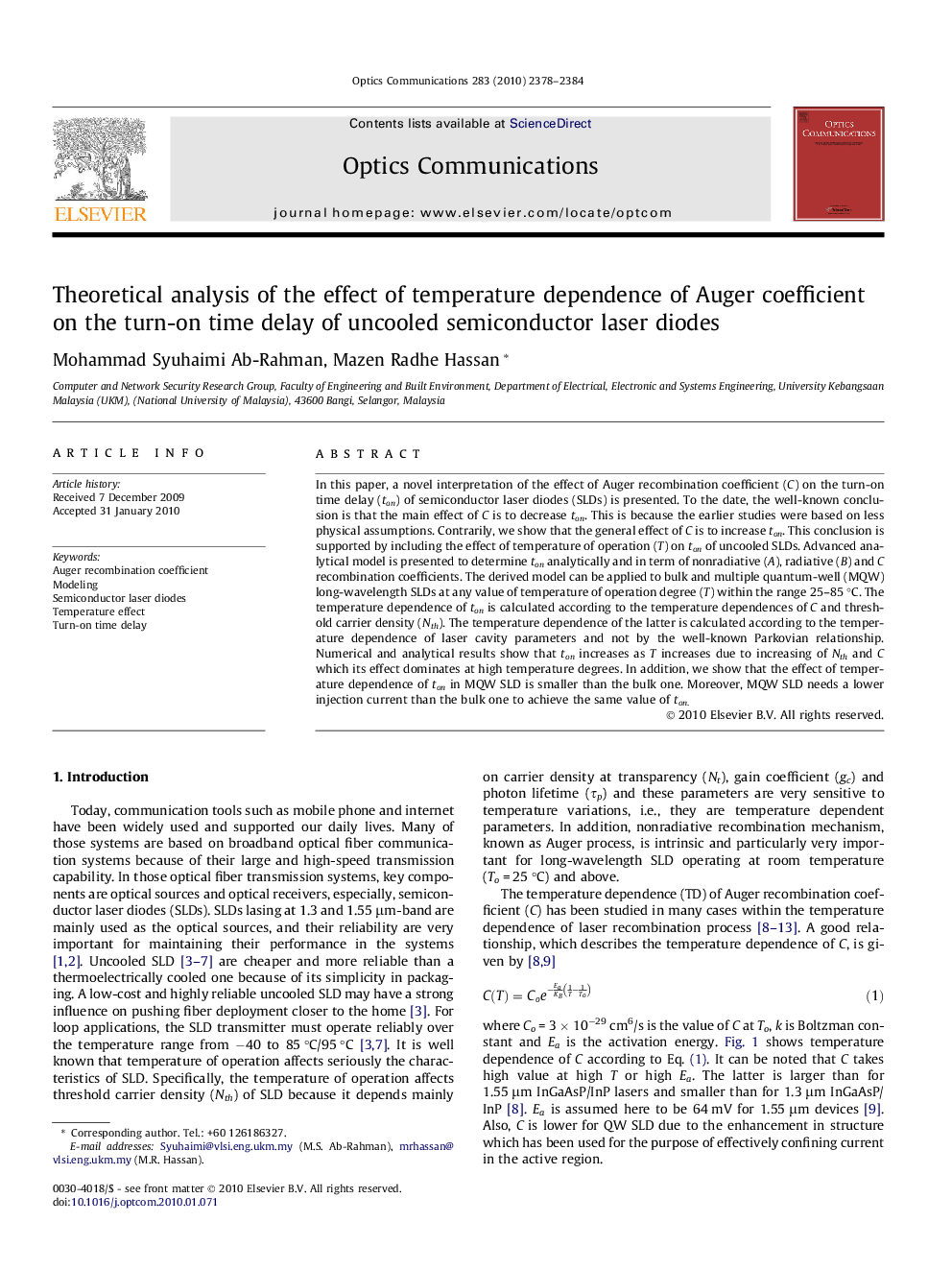| Article ID | Journal | Published Year | Pages | File Type |
|---|---|---|---|---|
| 1538227 | Optics Communications | 2010 | 7 Pages |
Abstract
In this paper, a novel interpretation of the effect of Auger recombination coefficient (C) on the turn-on time delay (ton) of semiconductor laser diodes (SLDs) is presented. To the date, the well-known conclusion is that the main effect of C is to decrease ton. This is because the earlier studies were based on less physical assumptions. Contrarily, we show that the general effect of C is to increase ton. This conclusion is supported by including the effect of temperature of operation (T) on ton of uncooled SLDs. Advanced analytical model is presented to determine ton analytically and in term of nonradiative (A), radiative (B) and C recombination coefficients. The derived model can be applied to bulk and multiple quantum-well (MQW) long-wavelength SLDs at any value of temperature of operation degree (T) within the range 25-85 °C. The temperature dependence of ton is calculated according to the temperature dependences of C and threshold carrier density (Nth). The temperature dependence of the latter is calculated according to the temperature dependence of laser cavity parameters and not by the well-known Parkovian relationship. Numerical and analytical results show that ton increases as T increases due to increasing of Nth and C which its effect dominates at high temperature degrees. In addition, we show that the effect of temperature dependence of ton in MQW SLD is smaller than the bulk one. Moreover, MQW SLD needs a lower injection current than the bulk one to achieve the same value of ton.
Keywords
Related Topics
Physical Sciences and Engineering
Materials Science
Electronic, Optical and Magnetic Materials
Authors
Mohammad Syuhaimi Ab-Rahman, Mazen Radhe Hassan,
